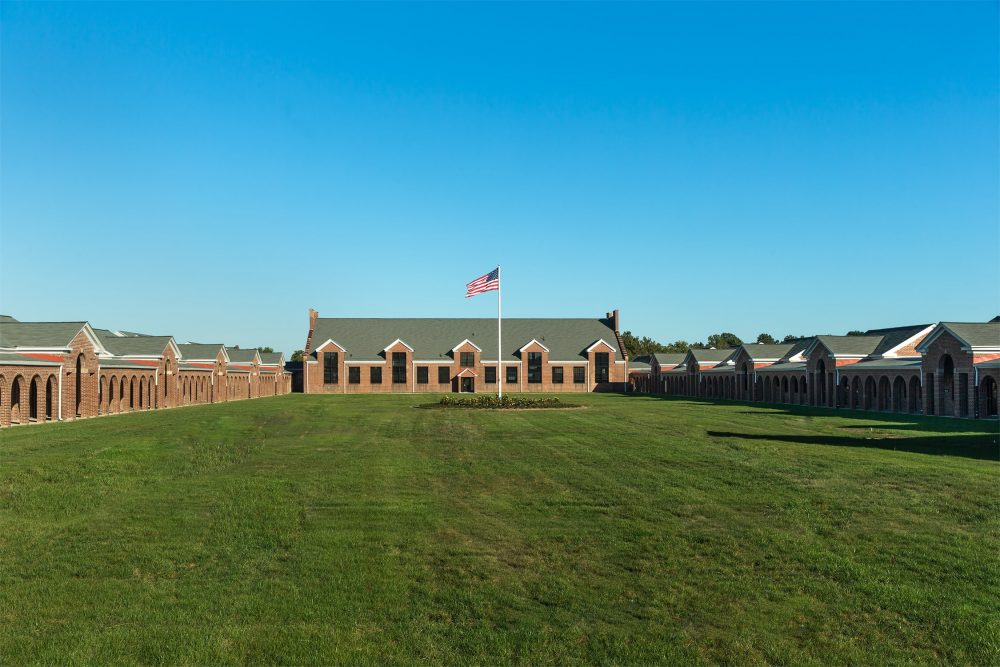Since 2000, 21 states have closed or partially closed at least one correctional facility. The spaces left behind are opportunities to revitalize communities and economies.
Over the past several years, the former Lorton Reformatory has been transformed into a sprawling multi-use complex called Liberty Market. In addition to the Liberty Crest housing, there’s a preschool, gym, medical offices, retail shops, and restaurants. Although the complex’s infrastructure distinctly recalls its history—eight watchtowers still stand—functionally, it has been created anew.
Lorton Reformatory is one of the many defunct prisons and jails overhauled for new purposes—a sustainability strategy called “adaptive reuse.” With the United States correctional population in continued decline—dropping more than 20 percent between 2011 and 2021—so, too, are correctional facilities. Twenty-one states have partially or fully closed at least one facility since 2000, and a recent study counted nearly 200 state and federal prisons that ceased operations between 2000 and 2022. More facilities have closed, or been announced to, since then. (Even so, closures and capacity downsizing still have not kept pace with population declines.)
Jail and prison closures—and their subsequent reinventions—are a growing trend, though not a new one. In 2007—around the same time that mass incarceration peaked nationally—the once-Charles Street Jail reopened in Boston as a luxury hotel, the Liberty, featuring a restaurant gauchely named Clink.
That both institutions were rechristened “Liberty” captures the complicated nature of redeveloping such sites. Incarceration is the antithesis of personal liberty. Even more, correctional institutions can be known for abuse and exploitation, and some have been formally accused of civil liberties and human rights violations. It raises the question of whether there’s a particular responsibility to acknowledge and memorialize the pasts of these spaces and the appropriate ways to do so.

